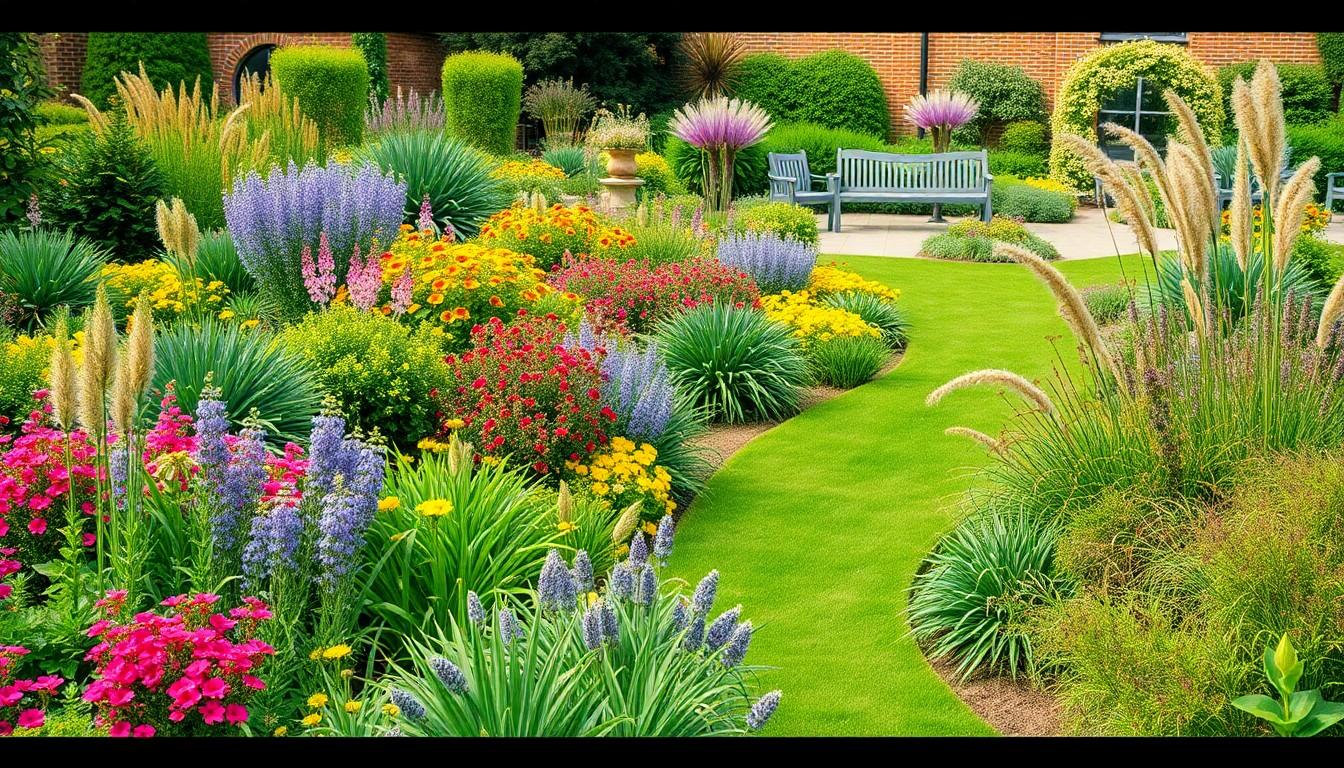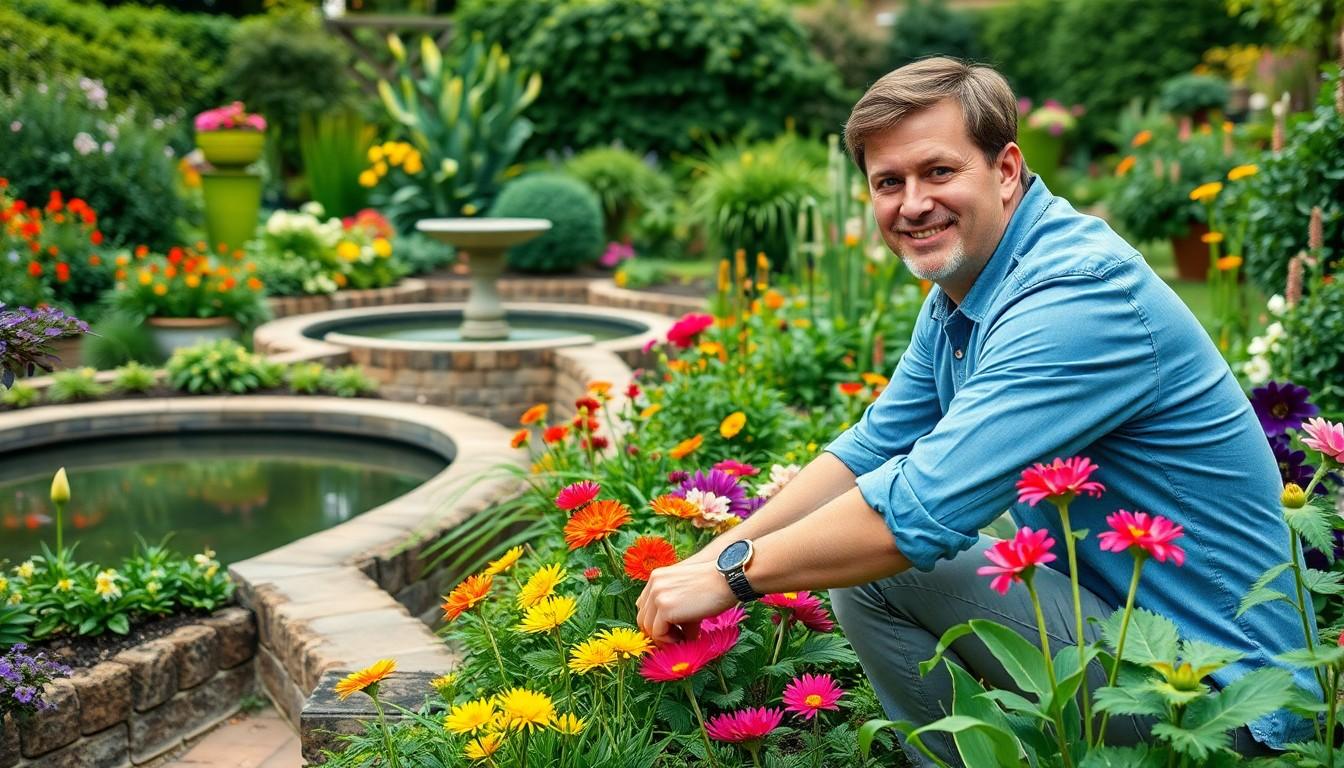In the bustling heart of London, where concrete jungles reign supreme, a vibrant garden can feel like a breath of fresh air. Imagine transforming a tiny balcony or a sprawling backyard into a lush oasis that makes even the Queen’s gardens envious. With a dash of creativity and a sprinkle of expert know-how, garden design and landscaping can turn any outdoor space into a picturesque retreat.
Whether it’s creating a cozy nook for sipping tea or a stunning backdrop for summer soirées, the possibilities are endless. London’s unique blend of culture and climate offers a playground for garden enthusiasts. So why settle for a patch of grass when you can have a botanical masterpiece? Dive into the world of garden design and landscaping, and let the magic of nature elevate your home to new heights.
Garden Design and Landscaping London
Garden design and landscaping in London offer diverse opportunities for homeowners and enthusiasts to enhance their outdoor spaces. This city’s unique cultural and climatic characteristics contribute significantly to gardening styles and plant choices. Experts encourage incorporating native plants that thrive in London’s climate, ensuring vibrant and sustainable gardens.
Various design approaches cater to different preferences, whether contemporary, traditional, or eclectic. Implementing functional elements like seating areas, pathways, and water features transforms gardens into relaxing retreats. Landscaping techniques, such as terracing and vertical gardens, optimize limited space while adding depth and character.
Professional landscapers utilize diverse materials, including stone, wood, and metal, to create visually stunning designs. They focus on integrating hardscaping with softscaping to achieve balance and harmony in outdoor environments. Efficient lighting enhances the garden’s ambiance at night, allowing homeowners to enjoy their space after sunset.
Trends in London emphasize sustainability and eco-friendliness. Gardeners adopt practices such as rainwater harvesting and composting to promote environmental stewardship. Urban gardening has also gained popularity, with residents utilizing balconies, rooftops, and community spaces for growing fruits and vegetables.
Throughout the city, numerous landscape designers and garden architects provide valuable services. They deliver personalized consultations, helping clients realize their visions for vibrant gardens. Services may include garden maintenance, seasonal planting, and design collaborations tailored to individual needs and preferences.
Engaging professionals not only streamlines the design process but also ensures creative solutions that enhance the overall aesthetic of outdoor spaces. London’s gardens, whether intimate corners or expansive estates, reflect both personal style and the city’s dynamic greenery.
Key Principles of Garden Design
Effective garden design hinges on understanding several key principles. These principles guide the creation of stunning landscapes that harmonize with personal preferences and the environment.
Understanding Space and Layout
Space and layout critically influence garden effectiveness. Analyze the outdoor area’s dimensions and shape before making design choices. Focus on establishing zones that facilitate flow and functionality. Create pathways to guide movement and designate areas for planting and seating. Optimize small spaces with vertical gardens or tiered plantings, maximizing plant exposure to sunlight. Plan for existing structures like fences and buildings, adjusting designs to enhance visual appeal. Scale design elements for balanced aesthetics, ensuring larger plants complement smaller ones.
Plant Selection and Maintenance
Plant selection impacts the overall garden health and aesthetics. Choose native plants suited to London’s climate for sustainability and ease of maintenance. Incorporate a mix of perennials, shrubs, and ornamental grasses to provide year-round interest. Prioritize plants with varying heights and textures to establish depth and visual intrigue. Understand individual plants’ maintenance requirements, including watering and pruning needs, to ensure longevity. Additionally, consider seasonal changes and bloom times, creating a garden that evolves throughout the year. Engage with local nurseries for expert advice on plant choices that thrive in specific conditions.
Popular Landscaping Styles in London
London boasts a variety of landscaping styles that cater to different tastes and preferences. Urban dwellers find inspiration in innovative designs that blend functionality with aesthetics.
Contemporary Landscape Design
Modern gardens in London often feature clean lines and minimalistic elements. These spaces utilize geometric shapes to create a sense of order. Incorporation of sustainable materials enhances the contemporary feel while promoting eco-friendliness. Native plants are commonly used to ensure adaptability to the local climate. Elements like outdoor seating areas and integrated lighting make these gardens perfect for social gatherings in the evenings.
Traditional English Gardens
Classic English gardens highlight charm and timeless beauty. They often include lush greenery and intricate flowerbeds, showcasing a vast array of colorful blooms. Curved pathways and neatly trimmed hedges create a sense of intimacy. Water features, such as ponds or fountains, enhance the tranquil atmosphere. These gardens incorporate heritage plants, allowing homeowners to embrace the rich cultural history of London while creating an inviting outdoor retreat.
Choosing the Right Professionals
Selecting the right professionals is crucial for achieving the desired garden design and landscaping outcomes. Expert guidance transforms outdoor spaces into exquisite retreats.
Landscape Architects vs. Garden Designers
Landscape architects typically focus on broader site planning and design, often incorporating infrastructure elements. They create comprehensive plans, considering both aesthetic appeal and functional requirements. In contrast, garden designers specialize in the visual aspects of a garden, emphasizing plant selection and layout. It’s vital to choose based on project scope and specific needs. For extensive projects requiring structural alterations, landscape architects prove advantageous. For smaller, aesthetic-focused gardens, garden designers deliver tailored solutions.
Factors to Consider When Hiring
Experience stands as a primary consideration when hiring professionals. Reviewing portfolios helps assess their design style and quality. Certifications also matter; ensure that candidates hold relevant qualifications, such as membership in professional organizations. Availability plays a critical role; check timelines to make certain the designer or architect can commit to your project schedule. Client testimonials provide insight into the quality of their work and customer service. Lastly, budget alignment is essential; clearly communicate financial constraints to find suitable professionals for your garden project.
Sustainable Practices in Garden Design
Sustainable practices in garden design focus on ecological balance and minimal environmental impact. Using native plants becomes essential, as these species adapt well to London’s climate and require less water, promoting biodiversity. Implementing rainwater harvesting systems allows homeowners to conserve water while nurturing their gardens.
Creating compost bins encourages recycling organic waste, providing natural fertilizers for plant growth. Selecting permeable materials for pathways helps manage stormwater runoff, reducing flooding risks in urban settings. Additionally, installing drip irrigation systems minimizes water waste, delivering moisture directly to plant roots.
Incorporating vertical gardens optimizes space and enhances air quality through increased plant density. Prioritizing organic pest control methods limits chemical usage, protecting local wildlife and promoting a healthy ecosystem. Developing pollinator-friendly gardens supports bees and butterflies, crucial for pollination and maintaining ecological balance.
Utilizing reclaimed materials for structures and decor not only reduces waste but also adds unique character to garden spaces. Cultivating edible gardens encourages sustainable food sourcing, allowing families to enjoy fresh, organic produce. Engaging in community gardening initiatives fosters social connections while promoting environmental stewardship.
Embracing seasonal planting aligns gardening choices with nature, ensuring optimal growth cycles. Seeking out local nurseries for plants and materials reduces carbon footprints through shorter transportation distances. By applying these sustainable practices, gardeners in London contribute to healthier ecosystems and enhance the beauty of their outdoor environments.
Transforming outdoor spaces in London into stunning gardens is an exciting journey that combines creativity with expert knowledge. By embracing the unique climate and cultural elements of the city, homeowners can craft personal retreats that reflect their style while promoting sustainability.
Choosing the right plants and incorporating functional features can enhance both beauty and usability. Collaborating with skilled professionals ensures that visions come to life, resulting in gardens that are not only aesthetically pleasing but also environmentally responsible.
With a focus on native species and sustainable practices, Londoners can create vibrant landscapes that thrive year-round, enriching their lives and the community.


